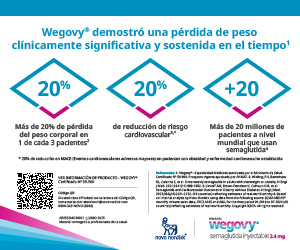Asythomatic bacteriuria in patients with diabetes
DOI:
https://doi.org/10.47196/diab.v53i1.142Keywords:
asymptomatic bacteriuria, pyuria, diabetesAbstract
Asymptomatic bacteriuria (AB) is often discovered incidentally by performing routine urinalysis. The prevalence is three to four times higher in patients with diabetes. The risk factors are the longer duration of diabetes, peripheral neuropathy, macroalbuminuria, lower body mass index and a previous urinary tract infection (UTI) event. The diagnosis of AB is the isolation of a specified number of colonies of a bacterium in urine samples from an individual without signs or symptoms of UTI. Escherichia coli. and gram-negative bacteria are the most frequent. It is suggested not to treat AB in women with diabetes with good metabolic control, regardless of pyuria onset. Bacteriuria and treatment should not be studied in asymptomatic diabetic patients with good metabolic control, except pregnant women, with urological procedures and kidney transplant recipients.
References
Zhanel GG, Harding GK, Nicolle LE. Asymptomatic bacteriuria in patients with diabetes mellitus. Rev Infect Dis 1991; 13(1):150-4.
Geerlings SE, Stolk RP, Camps MJ, et al. Asymptomatic bacteriuria may be considered a complication in women with diabetes. Diabetes Mellitus Women Asymptomatic Bacteriuria Utrecht Study Group. Diabetes Care 2000; 23(6):744-9.
Boyko EJ, Fihn SD, Scholes D, et al. Risk of urinary tract infection and asymptomatic bacteriuria among diabetic and nondiabetic postmenopausal women. Am J Epidemiol 2005; 161(6):557-64.
Geerlings SE, Stolk RP, Camps MJ, et al. Consequences of asymptomatic bacteriuria in women with diabetes mellitus. Arch Intern Med 2001; 161(11):1421-7.
Grabe M, Bartoletti R, Bjerklund-Johansen TE, Cai T (Guidelines Associate), Çek M, Köves B (Guidelines Associate), Naber KG, Pickard RS, Tenke P, Wagenlehner F, Wullt B. Guidelines on Urological Infections. European Association of Urology 2015.
Zhanel GG, Nicolle LE, Harding GK. Prevalence of asymptomatic bacteriuria and associated host factors in women with diabetes mellitus. The Manitoba Diabetic Urinary Infection Study Group. Clin Infect Dis 1995; 21(2):316-22.
Zalmanovici-Trestioreanu A, Lador A, Sauerbrun-Cutler MT, Leibovici L. Antibiotics for asymptomatic bacteriuria. Cochrane Database Syst Rev 2015; 4:CD009534.
Nicolle LE, Bradley S, Colgan R, et al. Infectious Diseases Society of America guidelines for the diagnosis and treatment of asymptomatic bacteriuria in adults. Clin Infect Dis 2005; 40(5):643-54.
Harding GK, Zhanel GG, Nicolle LE, et al. Antimicrobial treatment in diabetic women with asymptomatic bacteriuria. N Engl J Med 2002; 347(20):1576-83.
Meiland R, Geerlings SE, Stolk RP, et al. Asymptomatic bacteriuria in women with diabetes mellitus: effect on renal function after 6 years of follow-up. Arch Intern Med 2006; 166:2222-7.
Cai T, Nesi G, Mazzoli S, et al. Asymptomatic bacteriuria treatment is associated with a higher prevalence of antibiotic resistant strains in women with urinary tract infections. Clin Infect Dis 2015; 61(11):1655-61.
Downloads
Published
Issue
Section
License

This work is licensed under a Creative Commons Attribution-NonCommercial-NoDerivatives 4.0 International License.
Dirección Nacional de Derecho de Autor, Exp. N° 5.333.129. Instituto Nacional de la Propiedad Industrial, Marca «Revista de la Sociedad Argentina de Diabetes - Asociación Civil» N° de concesión 2.605.405 y N° de disposición 1.404/13.
La Revista de la SAD está licenciada bajo Licencia Creative Commons Atribución – No Comercial – Sin Obra Derivada 4.0 Internacional.
Por otra parte, la Revista SAD permite que los autores mantengan los derechos de autor sin restricciones.




























